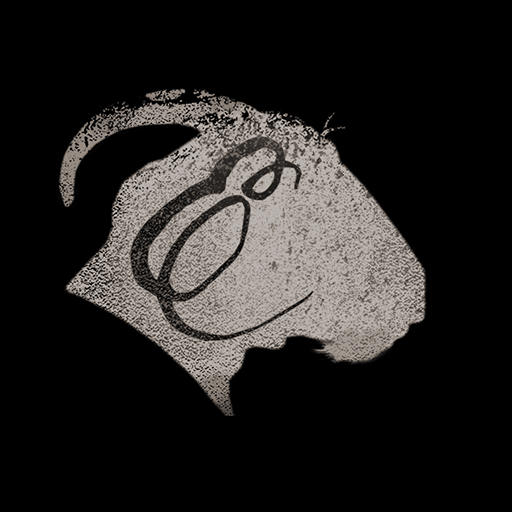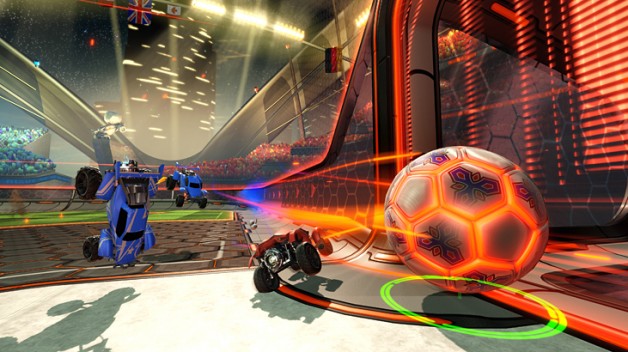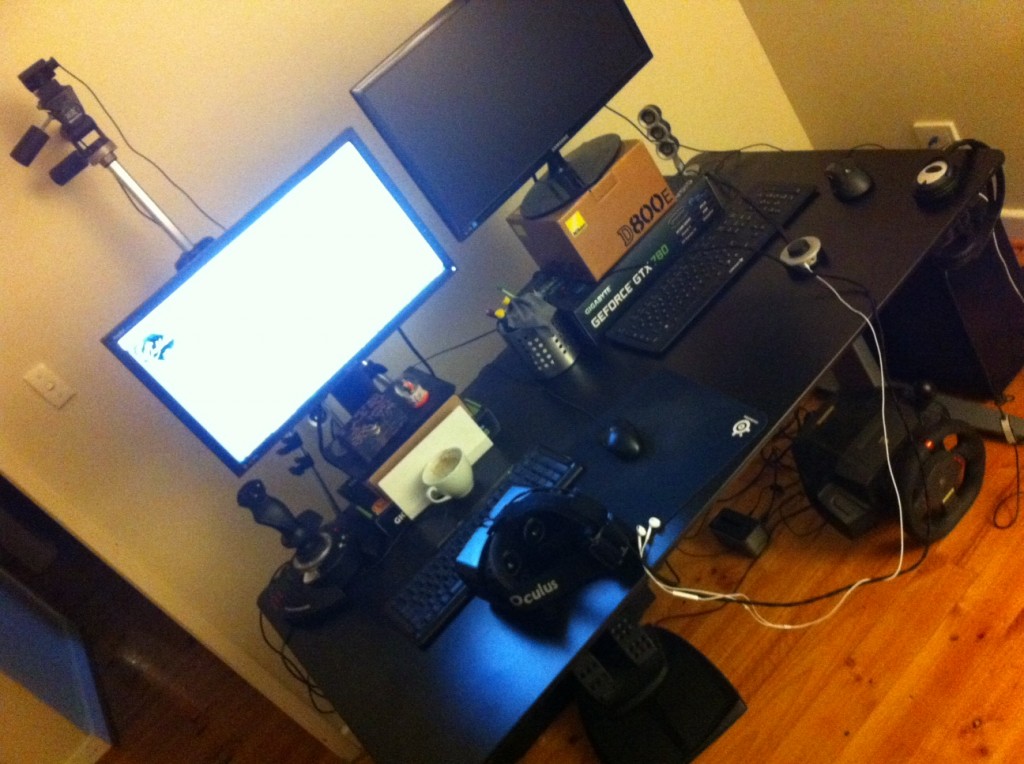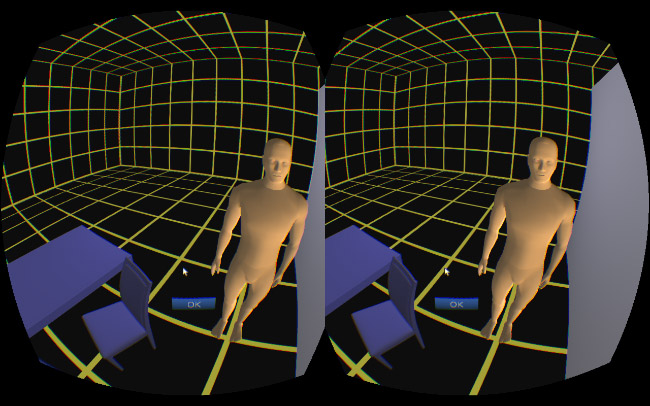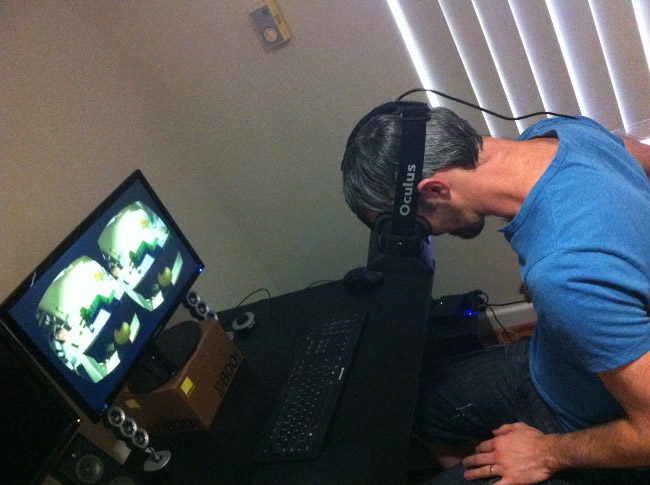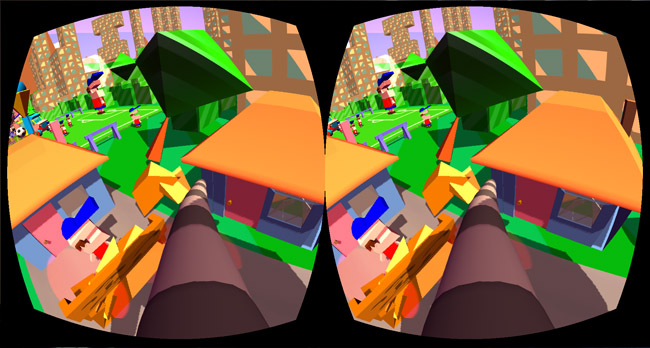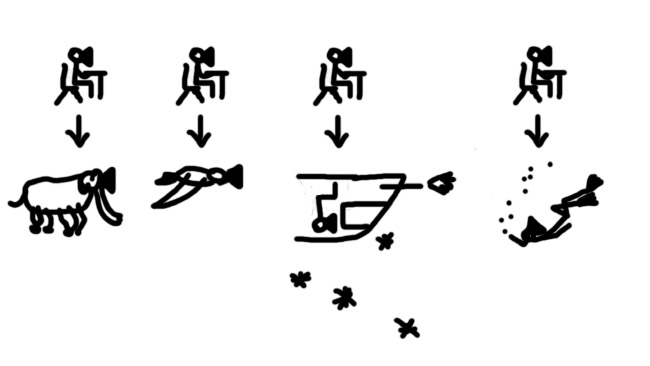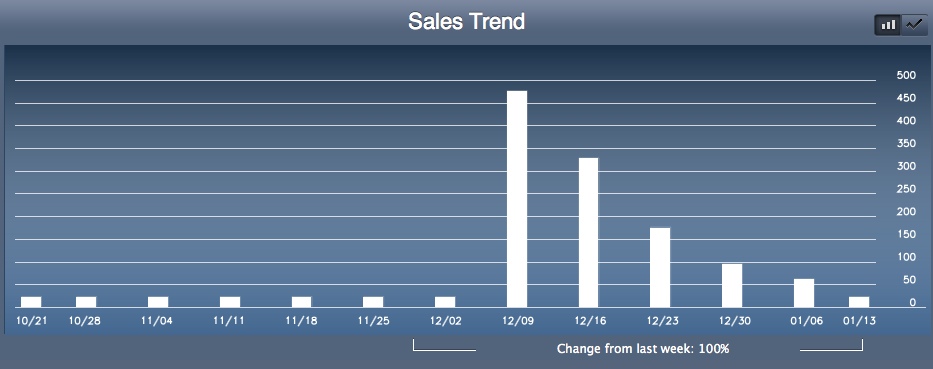I recently listened to an episode of Tim Ferriss’ podcast that talks about the health benefits of gaming and the lessons we can take from the games we play. Tim’s guest, Jane McGonigal challenges people to ask what the current game they’re playing can teach them, and what they can implement from that game in their every day lives. You can listen to it here.
Currently I’m playing the BestGameEverMade aka Rocket League an inordinate amount, certainly pushing close to (ok, over) the 21 hrs a week limit that Jane feels is a wise upper limit. So I thought I’d write up some thoughts. I’ve considered this topic before in another game I used to play a lot of, which is semi-professional (mid stakes) poker. Thinking again about that game, I think the two share a lot (as I suppose many games do). Read below for the lessons I feel that Rocket League can teach and how they might be applied to life. My examples are pretty skewed towards games development because that’s what I’m focusing on, but I think they’re fairly easily translated to business, study, and other things.
I’m certainly no “life coach” either, so I’ve left my own advice somewhat thin, and linked to people I like on the subject.
Rocket League?
If you haven’t played Rocket League, aka Soccer Cars, its exactly as the latter sounds – you play soccer with cars, ‘ramming’ the ball into the opponents goal to score. You also have access to a jump and rocket boost ability, which funs the game up to ridiculous levels. Its quite a spectacular game – fast cars, airborne cars, flipping cars, a huge floating ball, plus neon lights and epic slow motion replays that let you re-live your glorious goals! Oh and when you score, there’s a giant explosion in the net and nearby cars are flung into the air. Whoever thought of that is a true genius.
1V1
I think most of these “Rocket League lessons” are most applicable in the 1v1 version of the game as it seems to highlight a lot of things. Your team mates aren’t around to pick up the slack created from your errors, you can’t blame them for your mistakes, consciously or otherwise. The best blame game I’ve managed in 1v1 is the (maybe?) very slight RNG’ish-ness of the initial kickoff and some other ‘clash’ situations. Otherwise every action you take has pretty clear repercussions.
In 2V2 and above, forming and working within a team is very important, and I talk about it below.
1. Don’t over extend
This is the first thing that comes to mind when I think of my recent Rocket League games and potential tie in to real life. Most likely this is my number one because it has resulted in some of my most painful defeats. In my very biased opinion, I’ll be the superior player in said defeats, flying around the pitch in spectacular (ridiculous?) fashion, taking shots from all over the place, while my inferior opponent trundles around. Where it all goes wrong is where I overextend, miss a shot, which ricochets into my opponents hands, right when I have zero boost left to catch him. He doesn’t need any skill to walk it into my goal when I’ve over extended sometimes literally inside his goal net.
The problem is partially that I’m trying to play the same game as pro players, but without the requisite skill level. A classic example of this is trying for aerial goals, by far the best way to overextend and get out of position. Aerials require great control to pull off, and if you miss, you’ll sail slowly toward the ground while your opponent again walks the ball into your goal. If you can pull off reliable aerials, great, but otherwise you’re definitely overextending!
Here’s a clip of a player over extending just a little too much (especially in a high skill game like this one):
What’s the real life tie in? I’m personally involved in games development and have developed a couple in the past few years. They were very simple games that I managed to complete to some degree by myself or with another developer (www.class3outbreak.com and Unknown Orbit). Currently I’m attempting a more ambitious title that has made me question if I’m overextending my own skills, time and ability. I’m trying to mitigate this by hiring some part time help, and thankfully I have a business (www.hyperfocaldesign.com) that helps pay the bills while I tackle this, but I certainly still feel on the edge of my capabilities. Realising when you’re overextended in Rocket League is certainly a touch easier than trying to guess the schedule, time, budget and fun-factor of a multi year development cycle on a game, but even just bringing attention to this stuff can help or potentially wake you up a bit.
A friend of mine and concept artist has shared similar thoughts with me in regards to art. He teaches students who can sometimes try to run before they can walk, attempting some extreme perspective drawings of dynamic and complex anatomy with difficult to render materials. They have an epic, grandiose image in their mind of what it will look like, and what may take an experienced artist days the novice student is trying to do in half the time, leaving them inevitably discouraged and frustrated.
So I suppose the lesson is that in life, take into consideration your current skill level, abilities, resources, time and so on, and plan your projects accordingly.
1b. Risk Mitigation
Where will your next action leave you in relation to your opponent? What are the odds of you pulling this action off? Who is in the better position? This is a crucial skill in Rocket League. Watch this guy get it wrong:
This guy’s best possible case situation from this position is that he blocks the hit from his boosting opponent, leaving him still out of position facing the wall while his opponent faces his goal. He also has little chance of moving the ball toward the opponents goal, while his opponent has a very good one, being lined up parrallel to the wall. There’s also a good chance that he will end up upside down or turned over from his opponents hit, making things even worse. He gets lucky when his opponent misses.
The best move in this position is most likely to move back into a defensive position, keeping the ball and opponent between him and the goal, and choose a better spot to play back.
“IRL”, where do your plans leave you if you make a mistake, or when a risky move doesn’t pay off? In poker, people often play with only 1/100th of their entire ‘poker fund’ or bank roll in front of them. This mitigates risk so that during an unlucky streak, you can still survive to play another day.
Did you quit your day job to make a game that has to succeed in 1 year while living off meager savings? You should probably read Dan Cook’s excellent post on Minimum Sustainable Success.
Did you burn all your bridges with previous employers to make your new Oculus Rift VR-but wait for it, the hero is blind, (OMG!) out-there game? You kinda just boosted at a wall and hoped for the best.
The corollary is, as a very wise creative man named James Victore would say, “Use momentum as your friend. You only fail when you stop taking shots.” Rocket League is just extra tough on those damn rebounds every time you take and miss a shot, while games development requires that you get to survive long enough to take enough shots to score once or twice.
2. Prediction and Planning
What’s your opponent about to do? Where’s the ball going to bounce? What are your team mates doing? Judging these things takes a lot of practice and can result in some huge gains to your Rocket League’ing abilities. An obvious example of planning could be designating a goalie or defender, or informing your team mate that you’re about to center a ball, so they should get ready to take a shot. I felt a pretty noticeable click while playing at one point where, instead of forever driving straight at the ball, I’d start thinking a few seconds ahead of time and lining up for (seemingly now obvious) rebounds off walls.
Planning and prediction is a pretty valuable skill to have in real life, you’ll use it to guess at how large your market size might be, how long it’ll take you to develop something, how much money is required, what the server load might be, etc.
3. Meta game
The best place to look at the meta game in Rocket League is the kick off. Especially at lower levels you’ll find a common strategy where some players, instead of driving straight at the ball on kickoff, will sit back and let you fire a shot straight at them. They will save the flat shot easily, in fact kicking it straight back at you and into your own goal. The way to counter this is to chip the ball over them while they sit in goal, which is much harder to save. The meta game consists then of, will this player carry on doing this, or use it as a once off move? Will he come for the ball or sit back? What is your opponent doing, what has he done, what is he most likely to do next?
This ties in a little with prediction, and teaches us to consider the bigger picture and not just focus on each individual situation on its own. In game development, ask yourself how each feature you’re adding fits into the greater picture and how it serves your game’s end goal. How does this game you’re working on now fit in with the other games you’ve developed, or the audience you’ve built? If you’re going to kill yourself making your game, how does that affect the rest of your life and relationships?
4. Savings Strategy
Don’t spend it all at once, ya’ll. That’s what Rocket League teaches us in regards to our valuable boost meters. If you rocket around the place for no particular reason, you’ll soon find yourself with no extra speed when you need it most. The life lesson here is pretty clear, save something for a rainy day, you never know what may come up where saved resources will become invaluable.
5. Stay Calm
Due to the pace of the game, the excitement and thrill of scoring, winning, etc, you can sometimes fly at the ball and toward your opponents goal with such fervor that you may suddenly find yourself a) without savings in the boost bank and b) horribly overextended, or c) simply fumbling the controls and letting an easy save go begging. I think some of the greatest examples of control are the almost robot levels of emotion you see some Dota2 players having while avoiding almost certain death or wiping out an entire team on their own.
https://www.youtube.com/watch?v=8LpBFc3fbE0
Another important part of staying calm is when you’re in a bad, losing position, say 2-0 down or worse. The worst way you could handle this is just to quit the game, leaving you of course with no chance to come back. In the best case scenario you may stage a come back, or your opponent may get over confident. Even if you lose badly you can learn from what your opponent did and how he played, using that to improve your own game.
This is certainly one of the hardest things to keep under control in any competitive game and in more important life situations. I won’t pretend to offer any zen-like habits for keeping your cool, especially when I find it so hard, but the more you can actively practice this kind of thing in a zero downside situation like Rocket League, the better you can prepare for more serious and high emotion situations in real life. A good stepping stone to practicing emotional control is playing low stakes poker for real money, where the stakes are slightly higher, but not so high that you will negatively effect your bank balance too much. Entire books are written on the Psychology of Poker. This guy should read it (language warning):
https://www.youtube.com/watch?v=kojw0by3xcs
See how he does that pointless “rage jump” before the 2nd goal? He *might* have saved that shot if he kept his cool.
I find during games development one of the hardest things for myself is staying calm when I just can’t seem to figure out the cause of a certain bug. Often taking a break or going for a walk helps, as does writing and then not sending an email to a coder friend. This is called rubber duck debugging and I highly suggest trying it out.
6. SWOT
SWOT is a classic business acronym that stands for Strengths, Weaknesses, Opportunities and Threats. Each of these is vital to manage as part of your Rocket League game and in life!
Strengths
Identify what skills you have as a player/person and capitalise on those. Perhaps you played a lot of volley ball in real life, so you’re great at judging and timing an airborne ball? You might choose to use that to contest far more balls and with more aggression and speed than most players. Or years of console gaming has given you great control over your Xbox controller, allowing some more reliable aerials.
Back to the concept art example from No.1, if you’re a beginning artist, you may use the fact that you have a lot of knowledge surrounding … say, the WW2 era, and choose to focus on drawing objects from that area of expertise. If you’re a game developer and love and play a lot of strategy games, it’s probably wise to develop something based on that.
Weaknesses
What do you seem to have trouble with? If you can identify these things, you can change your game plan or project to mitigate them. Bad in goals? Maybe find a team mate who is a great goalie? Or attempt to leave the goal earlier to intercept more balls before they become shots on goal. Can’t code, but want to make a game? Try Unity’s Playmaker plugin, which uses a form of visual scripting.
Of course, you can also begin training to bring up your weak points, but just remember not to over extend and try to do everything.
Opportunities
One of my greatest Rocket League pleasures is biding my time for a loose ball to come toward me as I sit in goal or in midfield, and then spearing forward to make an unexpected shot. Sometimes this can also leave me badly out of position, so I’ve been trying to reign this in a little in 1v1 and 2v2! Opportunities exist for epic, ego boosting playzzz almost every second in Rocket League, and identifying them requires practically every skill in this post. Can you identify a player like me that overextends too often? Where will the ball bounce after he’s taken that wild shot? Is my opponent going for that boost, and can I deny him? What if that goalie misses that cross ball and I’m right there?
Identifying opportunities in real life is just as all encompassing as in Rocket League. In terms of game development it can often take a more simple form of, “this game seemed like it would be great if only it had X”. It can take the form of a coder looking for an artist or vice versa. As in Rocket League, always keep your eye out for opportunities while considering the rest of your SWOT analysis, and try not to over extend with too many!
Threats
In defense you’re often faced with the question of whether to sit back in your goal, or farther out, or whether to even rush out to tackle a threat head on, before it becomes a problem. In Rocket League its easy to forget that you kind of have two threats, the ball and the opposing player’s cars. In your constant fixation on the ball, you can forget its perfectly acceptable to ram or destroy an opponent rather than kick the ball like in real soccer. It can also be easy to forget this while you sit motionless, waiting for a ball to drop down to you.
Also related to prediction and opportunities, try to keep your eyes open for opposing cars trying to take you out, and remember you can play the car, not just the ball, which is often a far easier ground based target.
Try to always be anticipating how a ball could bounce badly or where an opponent could boost forward and take a shot on your goal, and remember its usually best to tackle a problem before its flying into the upper right corner of your net at 100kph.
In real life this is a very important part of SWOT analysis for business and game development. Is there anything on the horizon that could derail your project? Perhaps release dates for big name games that clash with your own? An API that looks like its about to be deprecated? This happened to Class 3 Outbreak, more than once.
7. Study Your Failures
You can save and watch your replays from a variety of perspectives, and what may have been unclear in the heat of the moment can be very educational when viewed after the fact. Did you get carried away near the opponents goal? Use boost where you shouldn’t have? Gotten airborne for no real reason? Maybe that bounce was just a bit awkward and there wasn’t much you could have done about it? Or you could reveal a critical bit of information on how your opponent drives at kickoffs, which caused him to win most of them?
There’s been a huge amount written on the value of failing as the best resource for learning and improving. Look at your replays in Rocket League and look back at past projects to try and learn as much as you can so that you can avoid the same pitfalls next time.
Personally, I recall during development on Unknown Orbit, watching a number of people struggling with the controls but thinking to myself that my awesome, two image tutorial would fix it, or that “its a skill based game, so its supposed to be hard”. When Touch Arcade reviewed it, the video showed the player having some big troubles controlling the comet, which resulted in an unappealing looking game. For Class 3 Outbreak, looking back, I should have realised much earlier that development speed was going too slowly and that our views on where the game should go were too different.
8. Team work
In games, business, study and relationships, good team work and forming a good team is huge. You can quite easily mitigate your weaknesses with other team member’s strengths, pass the ball to each other to gain openings on goal, and back each other up in threatening situations. The right team environments usually boost morale as well as each team member is there to encourage one another and to bring you back up if you’re down (like my team mates often do in Rocket League by spamming “What a save!” repeatedly when I miss a save…).
In real life and game development, the obvious and smallest team is the artist + programmer, each mitigating the other’s weakness and fully utilizing their strengths while working toward the same end goal. Other less obvious examples feature two artists or two programmers but little code or little artwork respectively, creating games that don’t require the skill set they lack in.
A lesson I learned over too long a period with Class 3 Outbreak is that you need to share the same goals for the game. Not just “lets make a successful/great game”, but precisely what type of game it will be and what the focus of development will be. If one person has a dream of writing their own graphics engine while the other wants to make a Dwarf Fortress clone (for an overly obvious example), then you’ll be in trouble. In my case, I wanted to focus on gameplay while the programmer wanted to focus on tools, with the added problem that I had a free schedule while he had a day job.
9, 10, 11. Enjoy Rocket League, Cos Shiiieeet its Fun!
Being brought up in 80’s and 90’s where gaming was pretty squarely relegated to nerd status, I sometimes still feel a bit guilty playing games. So I think it’s also important to just let yourself have fun and play a game of Rocket League, and deafen whoever is on Skype with your screams of delight as you sail through the air, overextending wildly to execute an unlikely but epic shot for glorious, glorious victory, deep into overtime, earning yourself a well deserved MVP.
Nice Shot!
Wow!
OMG!
OMG!
OMG!
Wow!
OMG!
Thanks!
Great Pass!
… here’s some epic, grin inducing footage of some Rocket League pros. I may have watched this more than a few times now:
To be notified of more posts like this in the future, or get notified when there’s some rare news related to my in-development game, subscribe below:
